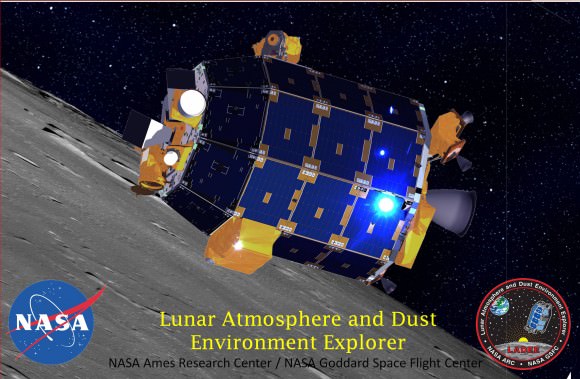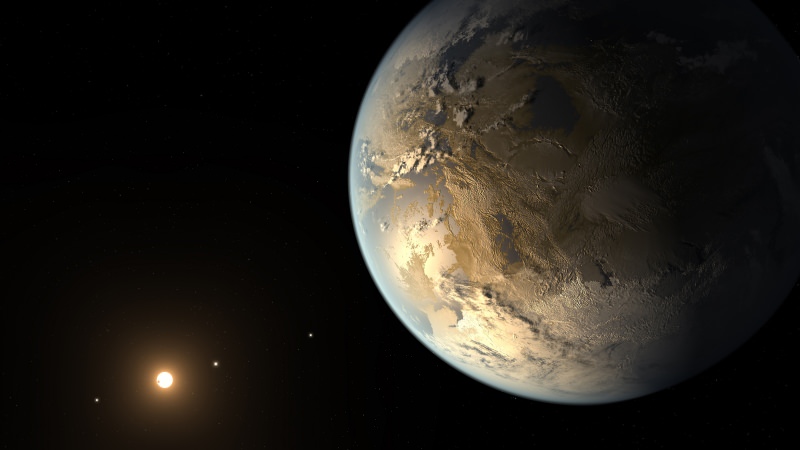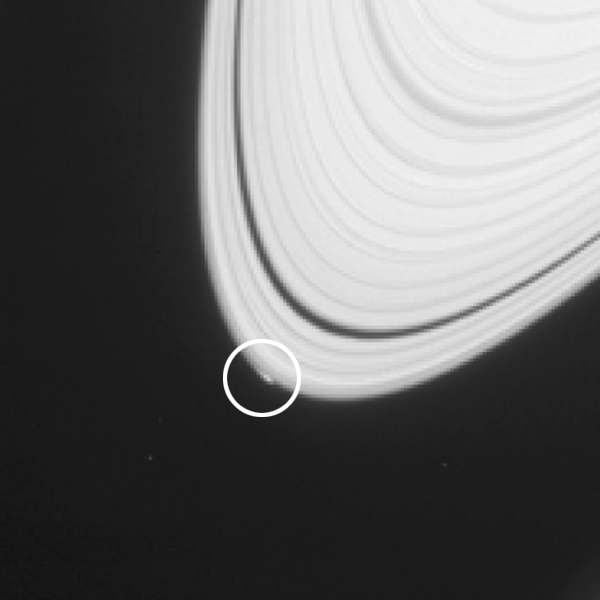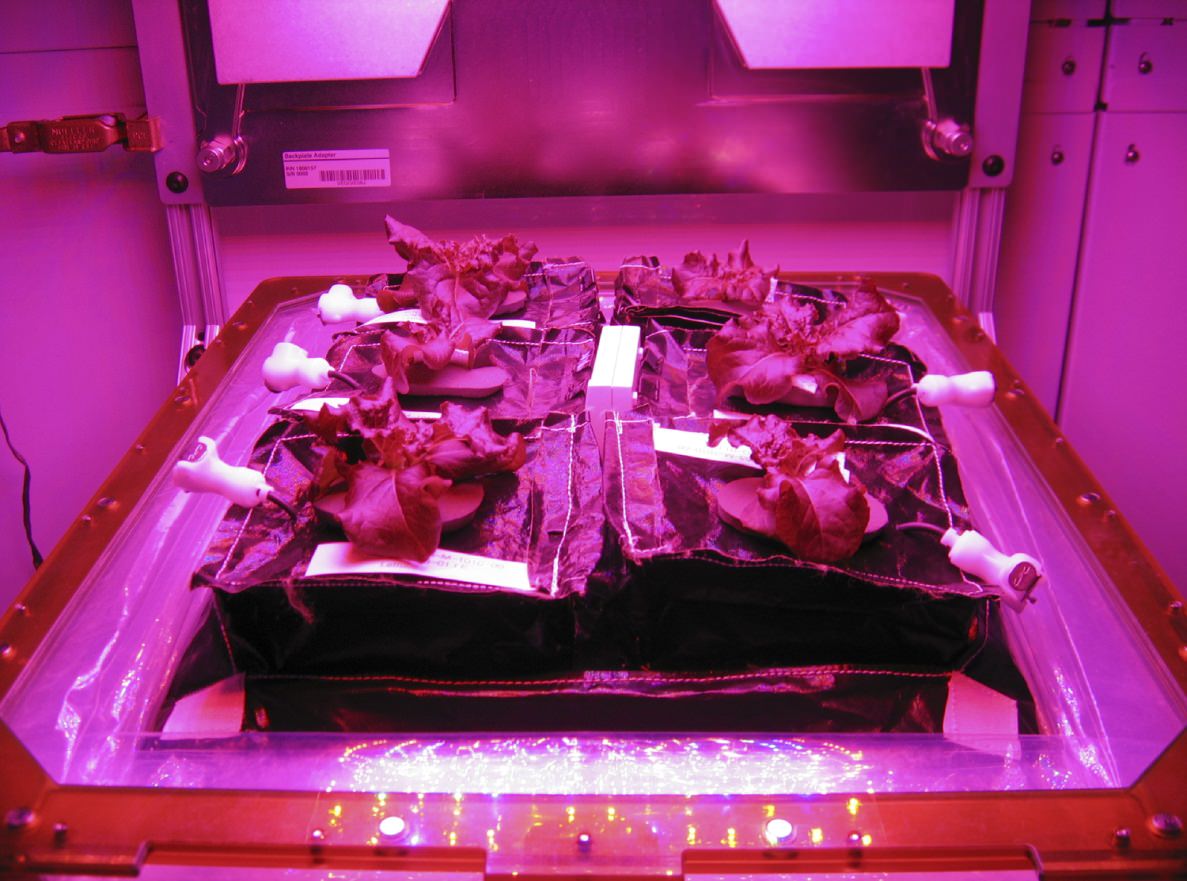Host: Fraser Cain
Guests: Casey Dreier, Brian Koberlein, Jason Major, Sondy Springmann, David Dickinson
Continue reading “Weekly Space Hangout – April 18, 2014: Another Earth, Dragon Launch, LADEE Impact”
NASA’s Highly Productive LADEE Dust Explorer Probe Crashes into the Moon as Planned
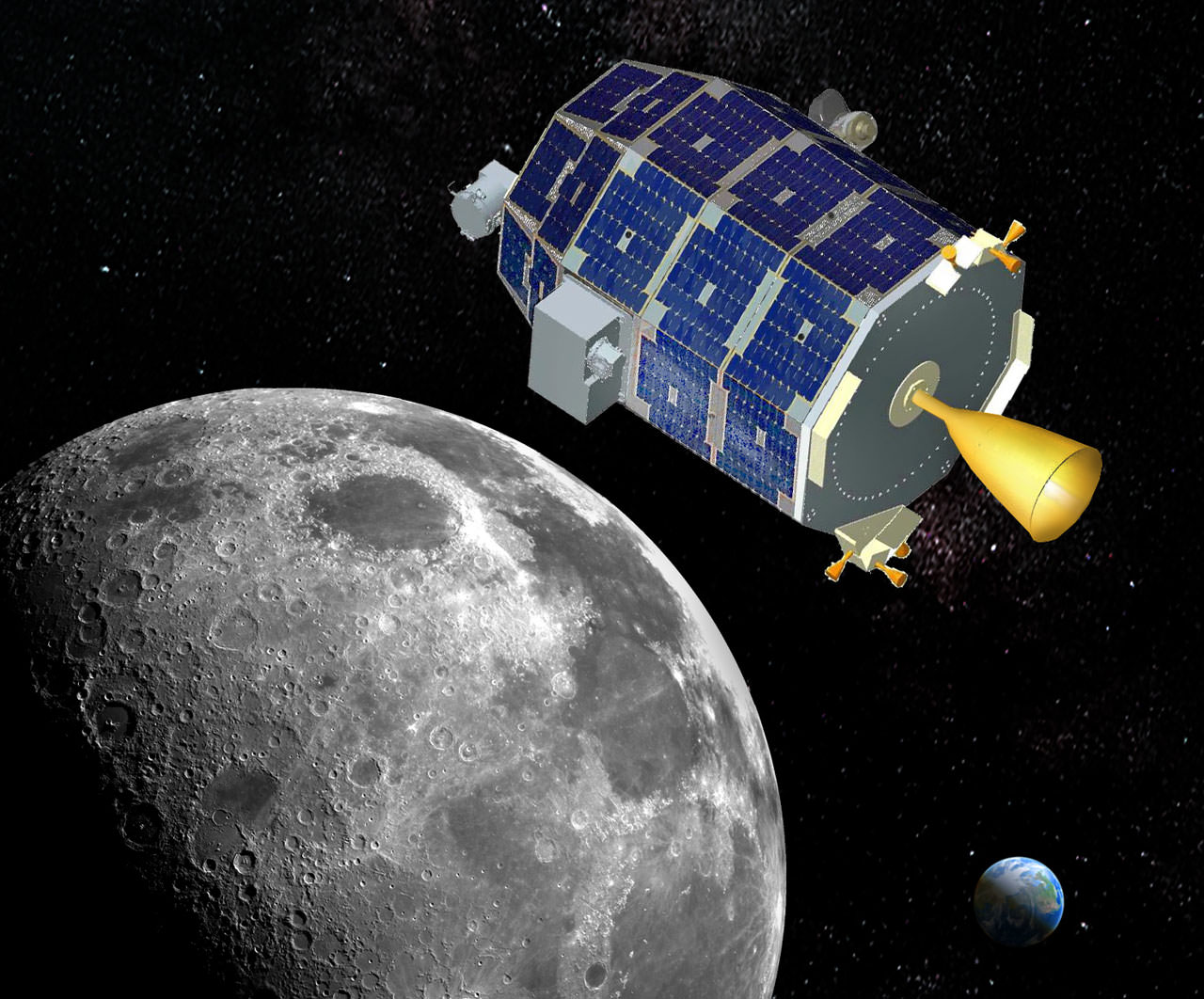
NASA’s LADEE lunar orbiting dust and atmosphere explorer probe has bitten the dust and crashed into the Moon’s surface exactly as planned following a fabulously successful and groundbreaking science mission that exceeded all expectations.
The Lunar Atmosphere and Dust Environment Explorer (LADEE) spacecraft impacted the far side of the Moon sometime overnight between 12:30-1:22 a.m. EDT, Friday, April 18 (9:30 and 10:22 p.m. PDT, Thursday, April 17) according to a NASA statement.
Running low on fuel and unable to continue any further science observations, the couch sized spacecraft was intentionally plunged into the rugged lunar surface at a spot designed to keep it far away from disturbing any of the historic Apollo manned lunar landing sites or unmanned surveyors on the Moon’s near side.
Mission controllers at NASA’s Ames Research Center allowed LADEE’s orbit to naturally decay following the conclusion of the probes extended mission in the final low orbit science phase.
The probe was likely smashed violently to smithereens and mostly vaporized from the heat generated upwards of several hundred degrees. Any surviving debris may be buried in shallow crater formed by the impact.
“At the time of impact, LADEE was traveling at a speed of 3,600 miles per hour – about three times the speed of a high-powered rifle bullet,” said Rick Elphic, LADEE project scientist at Ames, in a NASA statement.
“There’s nothing gentle about impact at these speeds – it’s just a question of whether LADEE made a localized craterlet on a hillside or scattered debris across a flat area. It will be interesting to see what kind of feature LADEE has created.”
The powerful NAC telescopic camera aboard NASA’s still orbiting Lunar Reconnaissance Orbiter (LRO) will be directed in coming months to try and photograph the impact site after engineers pinpoint the likely crash site.
LRO has already imaged LADEE while both were co-orbiting in different lunar orbits.
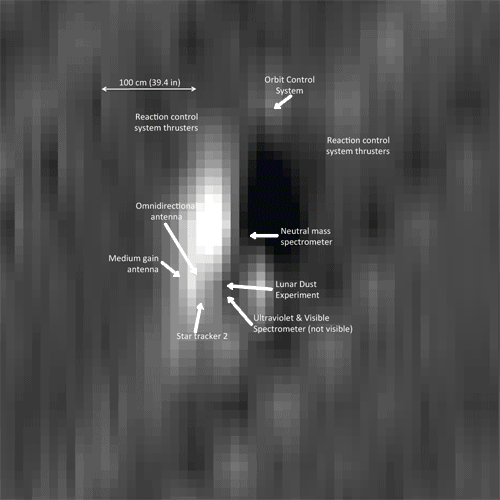
After completing its primary science mission in March, the already ultra low altitude of the lunar orbiting probe was reduced even further so that it was barely skimming just 2 kilometers (1 mile) above the pockmarked lunar surface.
Such a low altitude thus enabled LADEE to gather unprecedented science measurements of the Moon’s extremely tenuous atmosphere and dust particles since the species would be present at a higher concentration.
Lots of fuel is required to maintain LADEE’s orbit due to the uneven nature of the Moon’s global gravity field.
The final engine firing was commanded on April 11 to ensure a far side impact and the safety of all the historic lunar landing sites.
“LADEE also survived the total lunar eclipse on April 14 to 15. This demonstrated the spacecraft’s ability to endure low temperatures and a drain on batteries as it, and the moon, passed through Earth’s deep shadow,” said NASA
LADEE was launched on Sept. 6, 2013 from NASA Wallops in Virginia on a science mission to investigate the composition and properties of the Moon’s pristine and extremely tenuous atmosphere, or exosphere, and untangle the mysteries of its lofted lunar dust dating back to the Apollo Moon landing era.
All those objectives and more were accomplished during its nearly half year investigating Earth’s nearest neighbor.
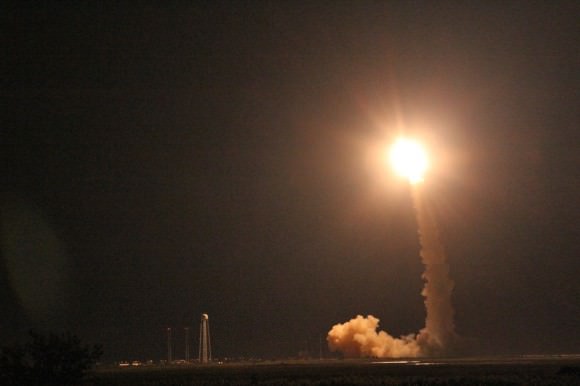
It entered lunar orbit on Oct. 6, 2013 amidst the ridiculous government shutdown that negatively affected a number of science missions funded across the US federal government.
The science mission duration had initially been planned to last approximately 100 days and finish with a final impact on the Moon on about March 24th.
NASA granted LADEE a month long extension since the residual rocket fuel was more than anticipated due to the expertise of LADEE’s navigation engineers and the precision of the launch atop the Orbital Sciences Minotaur V rocket and orbital insertion.
“It’s bittersweet knowing we have received the final transmission from the LADEE spacecraft after spending years building it in-house at Ames, and then being in constant contact as it circled the moon for the last several months,” said Butler Hine, LADEE project manager at Ames.
The 844 pound (383 kg) robot explorer was assembled at NASA’s Ames Research Center, Moffett Field, Calif., and is a cooperative project with NASA Goddard Spaceflight Center in Maryland.
The $280 million probe is built on a revolutionary ‘modular common spacecraft bus’, or body, that could dramatically cut the cost of exploring space and also be utilized on space probes to explore a wide variety of inviting targets in the solar system.
Stay tuned here for Ken’s continuing LADEE, Chang’e-3, Orion, Orbital Sciences, SpaceX, commercial space, Mars rover and more planetary and human spaceflight news.
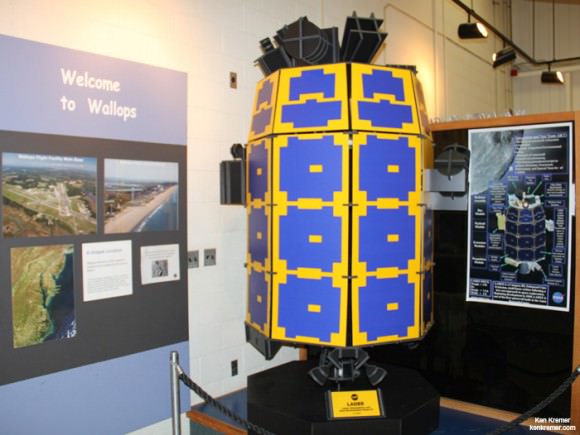
SpaceX Dragon launch to ISS Marches Towards April 18 Liftoff after Helium Leak Forces Scrub – Watch Live
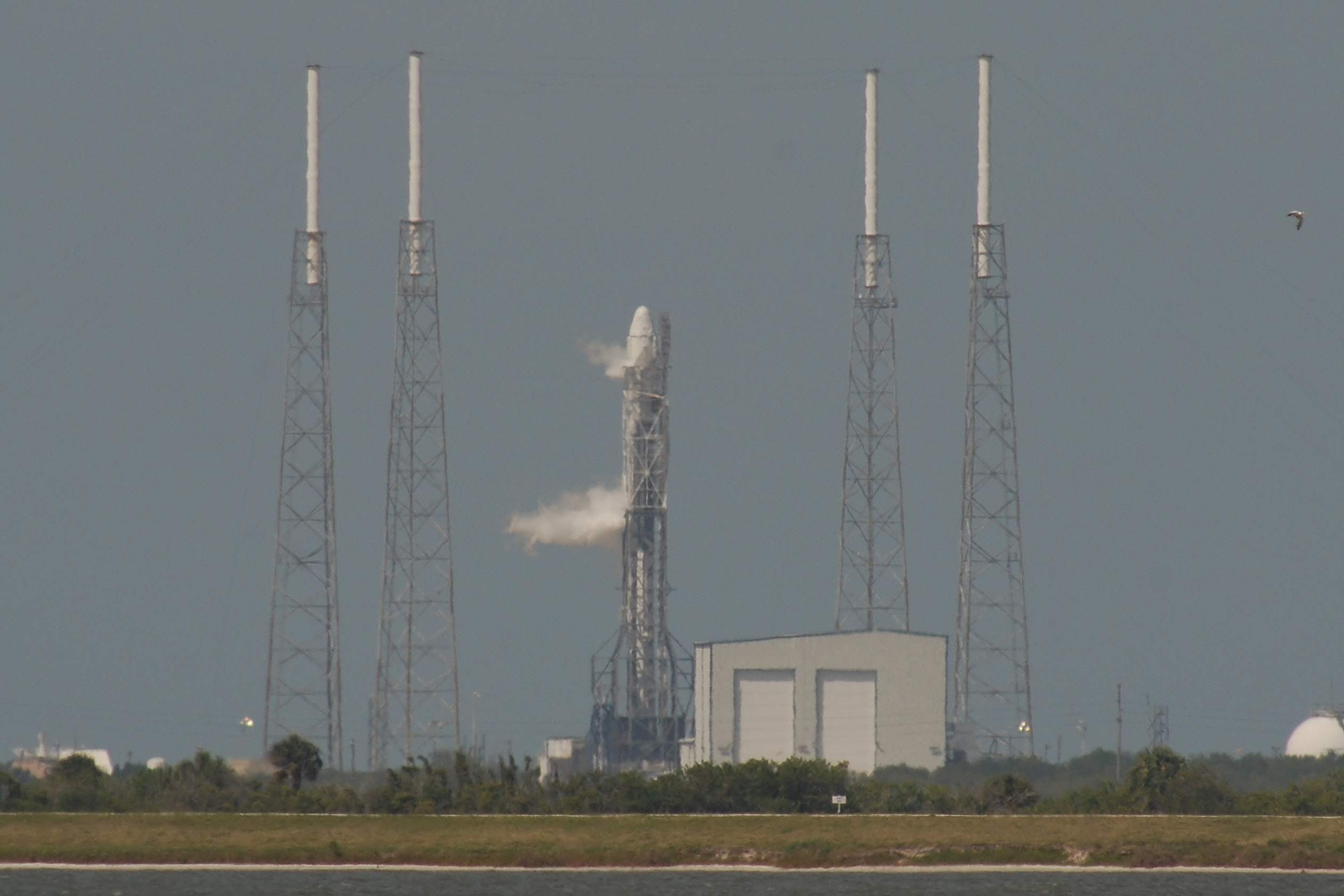
NASA and SpaceX are marching forward towards a Friday, April 18 liftoff attempt for the Falcon 9 rocket sending a commercial Dragon cargo craft on the company’s third resupply mission to the International Space Station following the scrubbed launch attempt on Monday, April 14 – forced by the discovery of a Helium gas leak inside the rocket during the latter stages of the countdown.
An on time blastoff of the upgraded Falcon 9 sets the stage for an Easter Sunday rendezvous and berthing of the Dragon resupply spacecraft at the massive orbiting outpost packed with almost 5000 pounds of science experiments and supplies for the six person crew.
However the weather prognosis is rather iffy for Friday afternoons launch attempt at 3:25:21 p.m. EDT from Space Launch Complex 40 at Cape Canaveral Air Force Station in Florida.
Forecasters predict only a 40 percent “GO” of acceptable weather conditions at the appointed liftoff time of the SpaceX-3 mission – roughly the time when the Earth’s rotation moves the rocket into the plane of the space stations orbit.
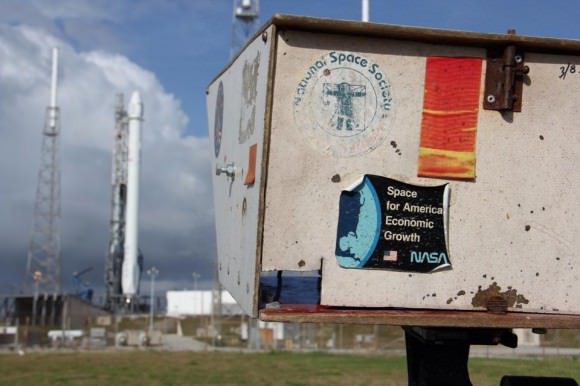
Meteorologists with the U.S. Air Force 45th Weather Squadron are predicting a significant chance of rain showers and thunderstorms in the Florida Space coast launch area that could violate three launch rules, namely the Thick Cloud, Lightning and Flight Through Precipitation rules.
In the event of a scrub for any reason on Friday, NASA, SpaceX and Air Force managers approved another backup launch opportunity on Saturday, April 19 at 3:02:42 p.m.
The weather outlook for a Saturday liftoff improves somewhat to 60 percent “GO”.
Originally, Monday and Friday were the only available launch target dates this week.
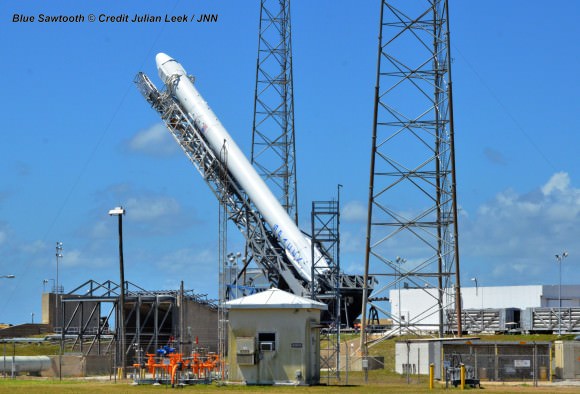
Assuming a successful Falcon 9 launch on Friday, station crew members Rick Mastracchio and Steven Swanson will grapple the Dragon cargo freighter with the 57 foot long Canadarm2 on Easter Sunday morning, April 20, at 7:14 a.m. at then berth it at the Earth-facing port of the Harmony module.
You can watch the launch live on NASA TV: http://www.nasa.gov/ntv
NASA TV live coverage will begin at at 2:15 p.m. EDT
SpaceX live launch coverage begins at 2:45 p.m. ET: Webcast at www.spacex.com/webcast
NASA TV coverage of the Easter Sunday grappling process will begin at 5:45 a.m. with berthing coverage beginning at 9:30 a.m. : http://www.nasa.gov/ntv
Monday’s launch attempt was scrubbed about an hour before liftoff when SpaceX mission controllers and engineers detected that a helium valve in the pneumatic system for stage separation between the first and second stages was not holding the specified pressure.
The success of the mission was therefore dependent on the perfect operation of a backup check valve for the stage separation pistons.
Although no technical issues were detected with the backup valve, the anamolous situation violated SpaceX launch rules.
“SpaceX policy is not to launch with any known anomalies,” said SpaceX in a statement.

The erect Falcon 9 was lowered back to the horizontal position so that SpaceX engineers could swap out the faulty helium valve, as well as conduct a complete inspection of the rocket to look for signs of any other issues that may have contributed to the valve not working as designed, said SpaceX.
This unmanned SpaceX mission dubbed CRS-3 will deliver some 5000 pounds of science experiments, a pair of hi tech legs for Robonaut 2, a high definition imaging camera suite, an optical communications experiment (OPALS) and essential gear, the VEGGIE lettuce growing experiment, spare parts, crew provisions, food, clothing and supplies to the six person crews living and working aboard the ISS soaring in low Earth orbit under NASA’s Commercial Resupply Services (CRS) contract.
To date SpaceX has completed two operational cargo resupply missions and a test flight. The last flight dubbed CRS-2 blasted off a year ago on March 1, 2013 atop the initial version of the Falcon 9 rocket.
NASA awarded contracts to SpaceX and competitor Orbital Sciences to develop unmanned cargo freighters via CRS to restore US capability to resupply the ISS following the shutdown of the space shuttle program in 2011.
SpaceX is under contract to NASA to deliver 20,000 kg (44,000 pounds) of cargo to the ISS during a dozen Dragon cargo spacecraft flights through 2016 at a cost of about $1.6 Billion.
The next launch of Orbital Sciences Antares/Cygnus commercial rocket to the ISS from NASA Wallops, VA, is tentatively slated for May 6. But the target date hinges on when this SpaceX-3 mission actually flies and could slip into mid-June.
Stay tuned here for Ken’s continuing SpaceX, Orbital Sciences, commercial space, Orion, Chang’e-3, LADEE, Mars rover, MAVEN, MOM and more planetary and human spaceflight news.
Kepler Has Found the First Earth-Sized Exoplanet in a Habitable Zone!
It’s truly a “eureka” moment for Kepler scientists: the first rocky Earth-sized world has been found in a star’s habitable “Goldilocks” zone, the narrow belt where liquid water could readily exist on a planet’s surface without freezing solid or boiling away. And while it’s much too soon to tell if this really is a “twin Earth,” we can now be fairly confident that they do in fact exist.
The newly-confirmed extrasolar planet has been dubbed Kepler-186f. It is the fifth and outermost planet discovered orbiting the red dwarf star Kepler-186, located 490 light-years away. Kepler-186f completes one orbit around its star every 130 days, just within the outer edge of the system’s habitable zone.
The findings were made public today, April 17, during a teleconference hosted by NASA.
“This is the first definitive Earth-sized planet found in the habitable zone around another star,” says lead author Elisa Quintana of the SETI Institute at NASA Ames Research Center. “Finding such planets is a primary goal of the Kepler space telescope. The star is a main-sequence M-dwarf, a very common type. More than 70 percent of the hundreds of billions of stars in our galaxy are M-dwarfs.”

Unlike our Sun, which is a G-type yellow dwarf, M-dwarf stars (aka red dwarfs) are much smaller and dimmer. As a result their habitable zones are much more confined. But, being cooler stars, M-dwarfs have long lifespans, offering planets in their habitable zones — like Kepler-186f — potentially plenty of time to develop favorable conditions for life.
In addition, M-dwarfs are the most abundant stars in our galaxy; 7 out of 10 stars in the Milky Way are M-dwarfs, although most can’t be seen by the naked eye. Finding an Earth-sized planet orbiting one relatively nearby has enormous implications in the hunt for extraterrestrial life.
“M dwarfs are the most numerous stars,” said Quintana. “The first signs of other life in the galaxy may well come from planets orbiting an M dwarf.”
Read more: Earthlike Exoplanets Are All Around Us
Still, there are many more conditions on a planet that must be met for it to be actually habitable. But size, composition, and orbital radius are very important first steps.
“Some people call these habitable planets, which of course we have no idea if they are,” said Stephen Kane, an assistant professor of physics and astronomy at San Francisco State University in California. “We simply know that they are in the habitable zone, and that is the best place to start looking for habitable planets.”
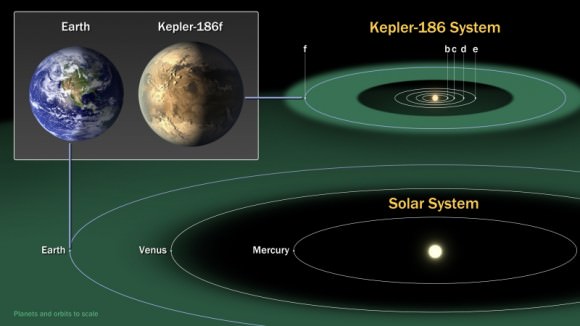
As far as the planetary system’s age is concerned — which relates to how long life could have potentially had to evolve on Kepler-186f’s surface — that’s hard to determine… especially with M-dwarf stars. Because they are so stable and long-lived, once they’re formed M-dwarfs essentially stay the same throughout their lifetimes.
“We know it’s probably older than a few billion years, but after that it’s very difficult to tell,” BAERI/Ames scientist Tom Barclay told Universe Today. “That’s the problem with M-dwarfs.”
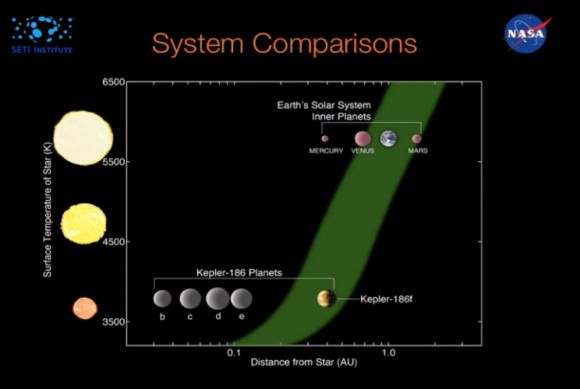
The exoplanet was discovered via the transit method used by NASA’s Kepler spacecraft, whereby stars’ brightnesses are continually monitored within a certain field of view. Any dips in luminance reveal the likely presence of a passing planet.
Because of its small size — just slightly over 1 Earth radius — and close proximity to its star, Kepler-186f can’t be observed directly with current telescope technology.
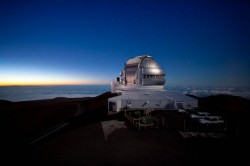
“However, what we can do is eliminate essentially all other possibilities so that the validity of these planets is really the only viable option,” said Steve Howell, Kepler project scientist and a co-author on the paper.
Using the latest advanced imaging capabilities of the Gemini North and Keck II observatories located atop Mauna Kea in Hawaii, astronomers were able to determine that the signals detected by Kepler were from a small orbiting planet and not something else, such as a background or companion star.
“The Keck and Gemini data are two key pieces of this puzzle,” Quintana said. “Without these complementary observations we wouldn’t have been able to confirm this Earth-sized planet.”
Kepler-186f joins the other 20 extrasolar worlds currently listed in the Habitable Exoplanets Catalog, maintained by the Planetary Habitability Laboratory at the University of Puerto Rico at Arecibo. To date 961 exoplanets have been confirmed through Kepler observations, with 1,696 total confirmed altogether. (Source)
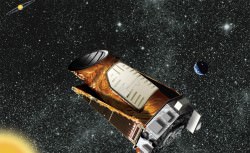
Read more: Mega Discovery! 715 Alien Planets Confirmed Using a New Trick on Old Kepler Data
Whether Kepler-186f actually resembles Earth or not, this discovery provides more information on the incredible variety of planetary systems to be found even in our little corner of the galaxy.
“The diversity of these exoplanets is one of the most exciting things about the field,” Kane said. “We’re trying to understand how common our solar system is, and the more diversity we see, the more it helps us to understand what the answer to that question really is.”
The SETI Institute’s Allen Telescope Array has surveyed the Kepler-186 system for any potential signals but so far none has been detected. Further observations are planned.
“Kepler-186f is special because we already know that a planet of its size and distance is capable of supporting life.”
– Elisa Quintana, research scientist, SETI Institute
The team’s paper, “An Earth-sized Planet in the Habitable Zone of a Cool Star” by Elisa V. Quintana et al., will be published in the April 18 issue of Science.
Learn more about the Kepler mission here, and read more about this discovery in NASA’s news release here and on the W.M. Keck website here.
Watch some video excerpts of team interviews and data renderings below:
Also, you can download the slides used in the NASA teleconference here.
Sources: San Francisco State University, Gemini Observatory, W.M. Keck Observatory, and SETI news releases
SpaceX Leases Historic Launch Complex 39A from NASA for new Era of Commercial Space Launches
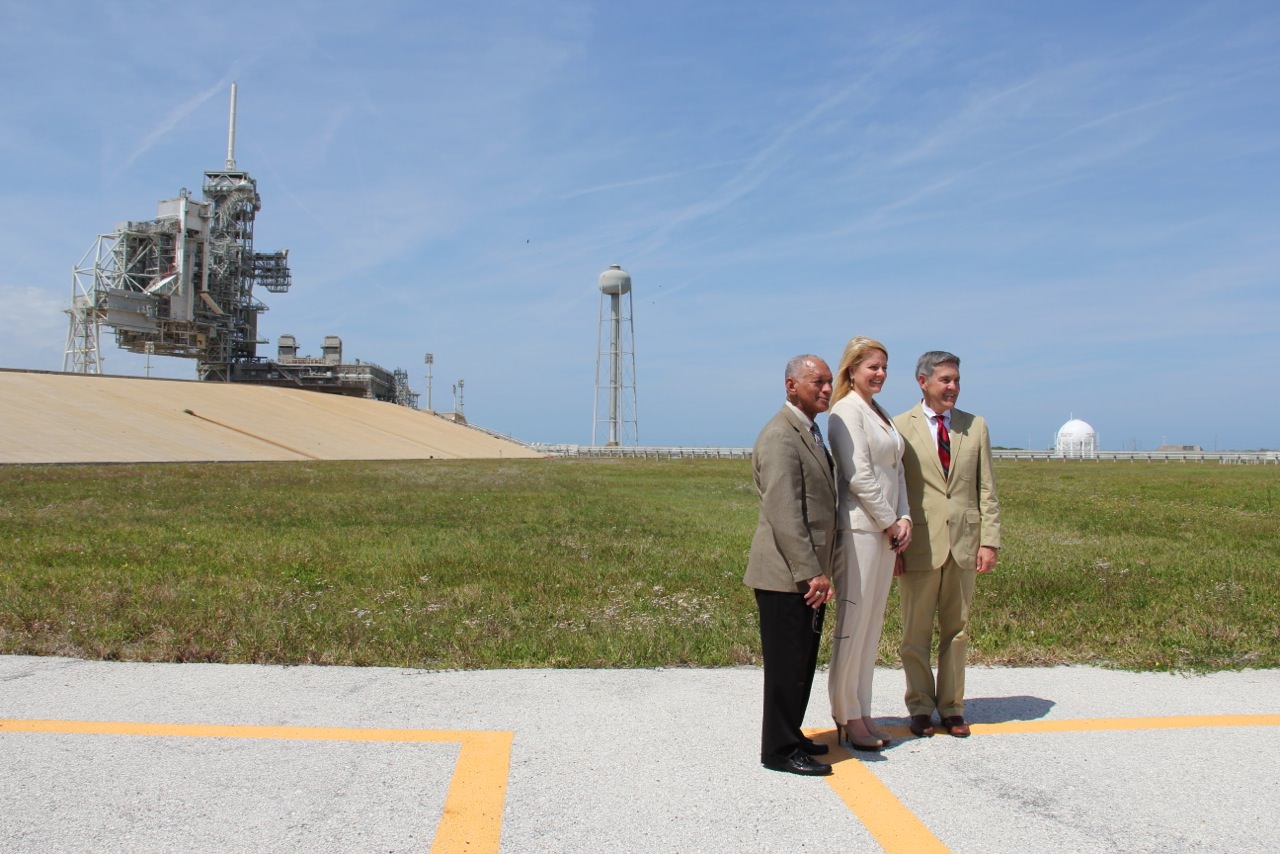
The keys to NASA’s historic launch Pad 39A that propelled humanity’s first man to walk on the Moon – Neil Armstrong – during the history making flight of Apollo 11, have been handed over to new owners, namely the private aerospace firm SpaceX for a new purpose – serving as a commercial launch facility.
NASA and Space Exploration Technologies Corporation (SpaceX) of Hawthorne, Calif., have just signed an agreement giving SpaceX rights to occupy and operate seaside Launch Complex 39A at the Kennedy Space Center (KSC) in Florida.
SpaceX was founded by billionaire, entrepreneur and space visionary Elon Musk.
SpaceX aims to give the now dormant pad a new lease on life in the emerging New Space era by revitalizing it as a commercial launch site for the company’s mammoth new Falcon Heavy rocket, currently under development, as well as for manned launches of the firm’s human rated Dragon spacecraft atop the Falcon 9 according to Gwynne Shotwell, president of SpaceX.
“We’ll make great use of this pad, I promise,” Shotwell told reporters at a briefing at the pad.
The liquid fueled Falcon Heavy will be the most powerful rocket in the world according to SpaceX, generating generating nearly four million pounds of liftoff thrust from 27 engines and thus significantly exceeding the power of the Delta IV Heavy manufactured by competitor United Launch Alliance.
Shotwell said renovations to pad 39A would start later this year. The maiden SpaceX launch from the complex is expected next year.
“We will launch the Falcon Heavy from here from this pad early next year,” Shotwell stated.
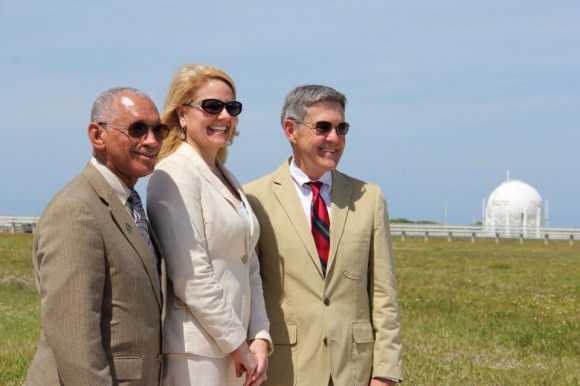
The SpaceX Dragon is one of three commercial crew vehicles being developed under a public-private partnership with NASA to ferry US astronauts to the International Space Station (ISS) and restore America’s human spaceflight capability lost since the shuttle’s retirement.
The Boeing CST-100 and Sierra Nevada Dream Chaser are also vying for the next round of private ‘space taxi’ funding from NASA.
Pad 39A has been inactive and mothballed since the last shuttle mission, STS-135, thundered to space in July 2011.
Not a single rocket has rolled up the ramp at KSC in nearly 3 years.

Credit: Ken Kremer/kenkremer.com
The new lease agreement was signed by NASA and SpaceX officials and announced onsite at Pad 39 at the briefing.
“Today this historic site from which numerous Apollo and space shuttle missions began and from which I first flew and left the planet on STS-61C on Columbia, is beginning a new mission as a commercial launch site,” said NASA Administrator Charles Bolden.
“While SpaceX will use pad 39A at Kennedy, about a mile away on pad 39B, we’re preparing for our deep space missions to an asteroid and eventually Mars. The parallel pads at Kennedy perfectly exemplify NASA’s parallel path for human spaceflight exploration — U.S. commercial companies providing access to low-Earth orbit and NASA deep space exploration missions at the same time.”
Under terms of the new agreement with NASA, the lease with SpaceX spans 20 years.
“It’s exciting that this storied NASA launch pad is opening a new chapter for space exploration and the commercial aerospace industry,” said Bolden.
SpaceX will also maintain and operate Pad 39A at its own expense, with no US federal funding from NASA.
Pad 39A will be SpaceX’s third launch site. The company also launches its Falcon 9 rockets from nearby Pad 40 on Cape Canaveral Air Force Station and a west coast pad on Vandenberg Air Force Base, Calif.
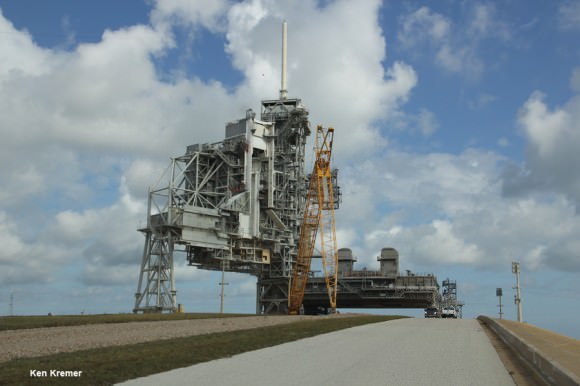
The next Falcon 9 liftoff with an unmanned Dragon cargo freighter is currently slated from Friday, April 18 following Monday’s scrub.
NASA determined that the agency no longer has a use for pad 39A since the end of the shuttle era and has been looking for a new tenant to take over responsibility and pay for maintenance of the launch complex. The agency awarded the lease to SpaceX in December 2013.
Instead, NASA decided to completely upgrade, renovate and modernize Pad 39As twin, namely Launch Pad 39B, and invested in converting it into a 21st Century launch complex.
NASA will use Pad 39B to launch the state of the art Orion crew vehicle atop the new Space Launch System (SLS) booster for voyages beyond Earth and taking humans back to the vicinity of the Moon and further out on deep space missions to Asteroids, Mars and beyond.
The first unmanned SLS test flight from Pad 39B is slated for late 2017.
Pad 39A was an active NASA launch pad for nearly 35 years starting back near the dawn of the Space Age in the 1960s.
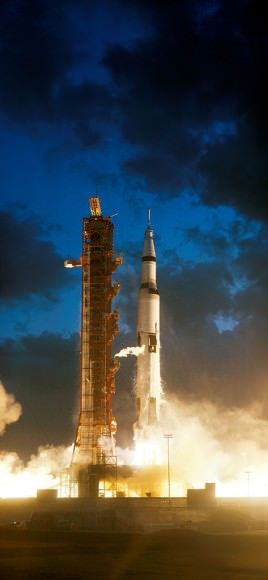
Apollo 4 was the first NASA booster to blast off from Pad 39A on Nov. 9, 1967 during the historic inaugural test flight of the Saturn V moon rocket that eventually served to dispatch all six US manned lunar landing missions.
The closing NASA use of Pad 39A took place on July 8, 2011 with the launch of STS-135 and orbiter Atlantis on the final flight of the space shuttle era.
The four person STS-135 crew delivered the last US pressurized module to the massive low-Earth orbiting ISS.
No Americans have launched to space from American soil since STS-135.
Launch Complex 39 was originally constructed to launch the Apollo moon landing missions atop NASA’s Saturn V booster in the 1960s and 1970s. Both pads were later modified to support the Space Shuttle program whose first launch took place in 1981 from pad 39A.
“Kennedy Space Center is excited to welcome SpaceX to our growing list of partners,” Center Director Bob Cabana said. “As we continue to reconfigure and repurpose these tremendous facilities, it is gratifying to see our plan for a multi-user spaceport shared by government and commercial partners coming to fruition.”
Stay tuned here for Ken’s continuing SpaceX, Orbital Sciences, commercial space, Orion, Chang’e-3, LADEE, Mars rover, MAVEN, MOM and more planetary and human spaceflight news.
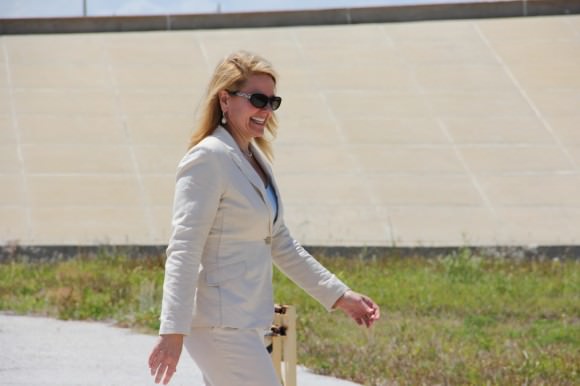
Astronaut Salary

Talk about a high-flying career! Being a government astronaut means you have the chance to go into space and take part in some neat projects — such as going on spacewalks, moving robotic arms and doing science that researches the nature of the human body.
Behind the glamor and the giddiness of flight, however, astronauts also need to pay their bills on Earth. How much you get paid as an astronaut depends on what agency you work for – as well as your experience, just like any other career.
The information below for NASA, the European Space Agency (ESA) and the Canadian Space Agency (CSA) is current as of April 2014, unless otherwise noted. Three agencies do not disclose salary scales online, at least in English pages: the Japan Aerospace Exploration Agency (JAXA), the Russian Federal Space Agency (Roscosmos) and the China National Space Administration (CNSA).
NASA

NASA has 43 active astronauts and eight astronauts-in-training who were selected in 2013. Until basic training is completed, which takes about two years, selectees are called “astronaut candidates”. (Astronauts from other agencies, such as ESA and CSA, often join NASA selectees for basic training.) Then even after they’re selected, it could be years more before they take a spaceflight.
Some astronauts are hired as civilian employees while others come over from the military. Civilian astronauts are paid according to a government scale that ranges from classifications GS-11 to GS-14.
In 2012, employees living in Houston (where astronaut training facilities are located) make a minimum of $64,724 for a GS-11 to a maximum of $141,715 for a GS-14. As employees pick up more qualifications, responsibility and experience, their salaries increase.
Military salaries were not disclosed, but NASA said those employees from the armed forces “remain in an active duty status for pay, benefits, leave, and other similar military matters.”
European Space Agency
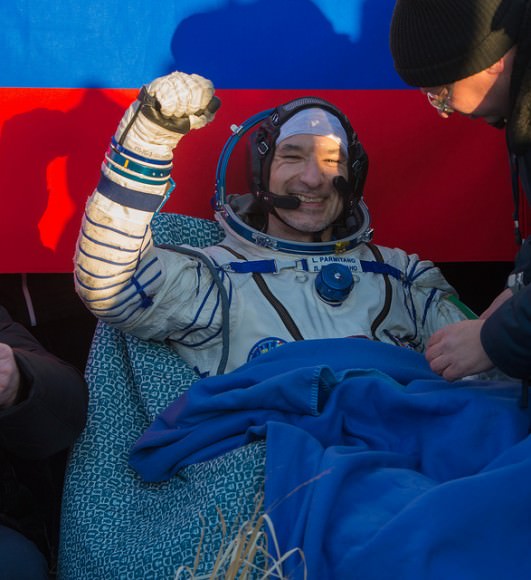
ESA’s most recent astronaut class was selected in 2009. They have all either flown in space, or have been assigned to future missions aboard the International Space Station. Astronauts are paid between the A2 and A4 scales set by the Coordinated Organisations, a group of European intergovernmental groups.
“Upon entering the ESA Astronaut Corps, new recruits will generally be paid at the A2 level. Following the successful completion of the basic astronaut training, the recruit will be paid in accordance with the grade A3. The promotion to the grade A4 generally follows after the first spaceflight,” the European Space Agency stated.
While ESA’s website does not specify the salaries for astronauts beyond the grade, another Coordinated Organisation – called the North Atlantic Treaty Organisation – lists the annual A2 salary as 58,848 Euros ($81,404) and the A4 salary as 84,372 Euros ($116,619.)
Canadian Space Agency
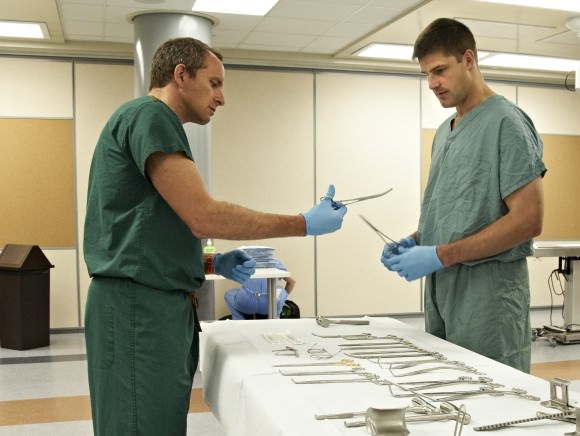
Canada has two active astronauts, neither of which have been assigned to a spaceflight yet. The CSA does not disclose on its website how much astronauts make, but some information is available on the website of the Privy Council Office – an advisory group to Canada’s prime minister and senior officials.
Documents indicate civilian astronauts are paid according to an Astronaut Salary Scale, ranging from Grade 1 to Grade 3.
As of 2011, astronauts are paid a minimum of $89,100 Canadian ($80,897) in Grade 1 and a maximum of $174,000 Canadian ($158,470) in Grade 3. Newly minted astronaut candidates appear to move to Level 2 upon completing basic astronaut training, which takes two years, and then increase their salary with more experience.
Military astronauts are paid according to a separate scale that was not disclosed in PCO documents.
Becoming a government astronaut
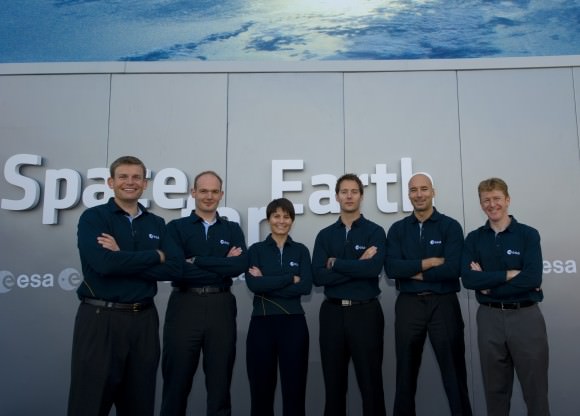
Generally, you must be the citizen of a particular country with a space program to apply as an astronaut. U.S. astronauts are U.S. citizens, European astronauts are citizens of European countries, and so forth.
Each space agency has periodic astronaut selections where they put out a call for candidates and then winnow down the list to a handful of people selected for astronaut training. The United States had its last selection in 2013, and ESA, CSA and JAXA did theirs in 2009.
While space agencies are careful not to specify certain kinds of degrees or universities for applicants, generally speaking astronauts have technical, medical or military backgrounds.
Astronauts are best known by the public for their time in space, but in reality they will spend most of their careers on the ground. International Space Station astronauts are expected to be proficient in station systems, science and spacewalks. They also must learn how to operate the Soyuz spacecraft that gets them into space, and to learn Russian since that country is a major partner of the International Space Station.
When astronauts aren’t training, they’re working to support other missions — sometimes in locations such as NASA’s Mission Control or in pools used for spacewalk training. They additionally spend hours of time doing outreach for schools and other audiences, and travelling all over the world to the various training centers used to get people ready for spaceflight.
It’s a tough career, but those who make the trek into space say the view is totally worth it.
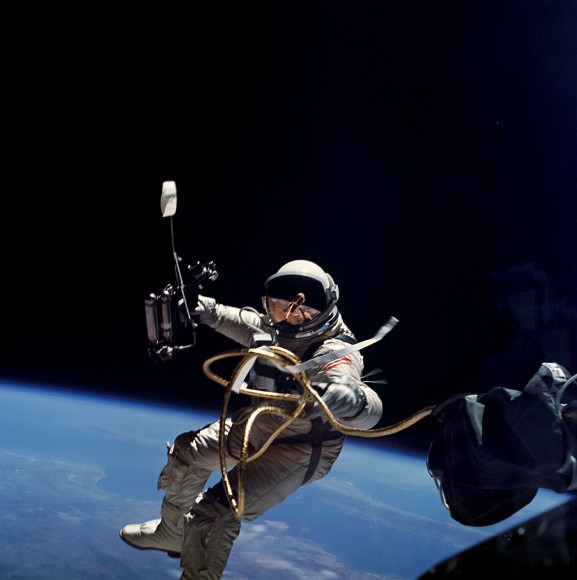
Want to learn more?
The following pages give you more information on becoming an astronaut, and what to expect once you get selected.
NASA
Astronauts
Astronaut Selection and Training
Astronaut Biographies
CSA
Canadian Astronauts
Becoming An Astronaut
Active Astronauts
Former Astronauts
ESA
Astronauts
How To Become An Astronaut
European Astronaut Biographies
JAXA
Is Saturn Making a New Moon?
Congratulations! It’s a baby… moon? A bright clump spotted orbiting Saturn at the outermost edge of its A ring may be a brand new moon in the process of being born, according to research recently published in the journal Icarus.
“We have not seen anything like this before,” said Carl Murray of Queen Mary University in London, lead author of the paper. “We may be looking at the act of birth, where this object is just leaving the rings and heading off to be a moon in its own right.”
In images acquired with Cassini’s narrow-angle camera in 2013, a 1,200-kilometer-long, 10-kilometer-wide arc of icy material was observed traveling along the edge of the A ring. The arc is thought to be the result of gravitational perturbations caused by an as-yet unseen embedded object about a kilometer wide — possibly a miniature moon in the process of formation.
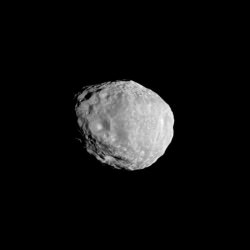
The half-mile-wide object has been unofficially named “Peggy,” after lead author Murray’s mother-in-law (whose 80th birthday it was on the day he was studying the Cassini NAC images.) Murray first announced the findings on Dec. 10, 2013 at the AGU 13 meeting in San Francisco.
According to the team’s paper, Peggy’s effects on the A ring has been visible to Cassini since May 2012.
Eventually Peggy may coalesce into a slightly larger moon and move outward, establishing its own orbital path around Saturn. This is how many of Saturn’s other moons are thought to have formed much further back in the planet’s history. Now, its rings having been depleted of moon-stuff, can only create tiny objects like Peggy.
“Witnessing the possible birth of a tiny moon is an exciting, unexpected event.”
– Linda Spilker, Cassini Project Scientist at JPL
While it is possible that the bright perturbation is the result of an object’s breakup rather than formation, researchers are still looking forward to finding out more about its evolution.
Read more on the NASA/JPL news release here.
To find out more about the Cassini mission visit saturn.jpl.nasa.gov and www.nasa.gov/cassini. The Cassini imaging team’s website is at ciclops.org.
How Do We Know the Moon Landing Isn’t Fake?
There’s a conspiracy theory that astronauts never landed on the Moon. Is it all a conspiracy? Were the Moon landings faked? What is the evidence that we actually went to the Moon?
Apparently, there’s an organization called “NASA”, who’s done a remarkable job of sticking to their story. They say Neil Armstrong and Buzz Aldrin landed on the Moon on July 20, 1969, and set foot on the surface 6 hours later.This same organization claims there were 5 additional missions which successfully landed on the Moon, and an alleged total of 12 people went for a walk there.
Can you imagine? According to them, they spent $24 billion, which is more than $150 billion in inflation adjusted dollars. Their so-called “Apollo” program allegedly employed 400,000 people, supported by more than 20,000 companies and research institutions. I say “alleged”, as some people choose to think the Moon landings were acts of cinematic chicanery.
More than 10 years ago, Fox popularized the Moon landing conspiracy with a show called “Did We Land On The Moon?”. They revealed several pieces of evidence about the hoax and cover-up citing incorrect shadows on the Moon, lack of background stars, and more. Each of the pieces of evidence they present is wrong and easily explained once you understand the underlying science.… Or at least, that’s what they would have us believe.
Phil Plait successfully brings a NASA supporting voice to this story, explaining how the evidence against moon landings is at best, fantasy and misunderstanding. A more cynical view might be to suggest it’s a deliberate manipulation created to maintain an anti-scientific narrative to foster ignorance, mistrust and uphold a larger political agenda. Do a little search for “Phil Plait moon landing” and you’ll see him present even-handed science over any one of the arguments. In fact, if you buy into that whole “evidence” idea, he appears to successfully tear apart the conspiracy arguments.
Some still, are not convinced, possibly including you. “NASA and Phil, they’re in cahoots. Phil’s a PhD astronomer, which means he studies space, one of the letters in NASA stands for SPACE, I think it’s the A.” Coincidence? I think not. There’s collusion going on there.
The main pillar of any conspiracy requires a few select people keeping a really, really, really big secret. Looking at the numbers, the select group required to successfully fabricate the appearance of hurling metal capsules containing humans at our orbiting neighbor and then retrieving them, additionally keep their story straight for at best 45 years, and never, ever slip up… is about 400,000 humans.
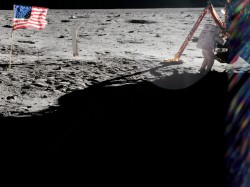
So, there are really two sides to this story, the NASA side which is… They went to the Moon. and everyone is telling the truth. OR, they never went to the Moon, and somehow 400,000 people have never, ever, ever, ever let it slip that they made a bunch of fake moon rocks, or the rockets shot up didn’t really go anywhere. It’s all a big ruse. The thought 400,000 people have managed to keep their mouths shut is definitely the more romantic perspective. Seeing people come together to screw with everyone, and then never blabbing. This truly is a triumph of the human spirit.
When something big does happen, like the Chelyabinsk meteor, we see the evidence everywhere – for example captured on Russian dashboard cameras. For the lunar landing, NASA suggests something similar. There are independent astronomers who tracked the rockets escape from Earth’s gravity, and are either providing unsolicited, nonpartisan unfunded support of the events, or they’re in on the whole thing. The Russians, who were in a race with the Americans to be the first to set foot on the Moon, allegedly tracked the missions in horror and disappointment.
NASA just keeps sticking to this story that they sent people to the moon. In fact, they just keep on producing more of their “evidence”. They recently published high resolution images of the surface of the Moon captured by their own Lunar Reconnaissance Orbiter. Adding a whole new generation of secret keepers, who now know the secret handshake and get participate in the rigging of Oscar nights.
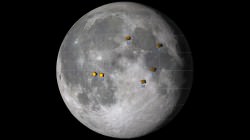
They imaged all of the alleged Apollo landing sites, and they haven’t missed any detail. You can see the landers, rovers, and even the astronauts’ footsteps. The images show that all the flags planted are still standing, except Apollo 11, which was blown over by the exhaust from the ascent engine. Or alleged exhaust from an alleged ascent engine, if you’re still thinking 400,000 people are continuing to punk the triumphs of mankind. Some might suggest that a big paycheck was sent on over to China and Japan, to have them verify the landing sites by photographing them with their own spacecraft.
According to NASA the astronauts placed retro-reflectors during their missions which reflect light directly back to Earth. Apparently these can be used this to calculate the distance to the Moon with 1 cm accuracy. So, if you want to confirm that humans went to the Moon for yourself, you could just point a high-power laser at the landing sites. Sure, there are many large independent institutions which have verified the existence of these retro-reflectors, but who knows, maybe they’re some how pawns of our silent and vigilant 400,000 co-conspirators.
What do you think? Make up a conspiracy theory for your favorite triumph of human innovation and exploration! Post it in the comments below.
SpaceX Cargo Launch to Station “GO” for April 14 – Watch Live Here

SpaceX Falcon 9 rocket preparing for April 14, 2014 liftoff from Space Launch Complex 40 at the Cape Canaveral Air Force Station, Fla. Credit: Julian Leek
Watch the SpaceX Launch Live here – NASA TV link below[/caption]
Following closely on the heels of Thursday’s spectacular Atlas V rocket blastoff from Cape Canaveral and a last moment computer failure at the ISS over the weekend, an upgraded Space X Falcon 9 rocket is now poised to launch on Monday (April 14) and complete a double barreled salvo of liftoffs from the Florida Space Coast merely 4 days apart – if all goes well.
The SpaceX Falcon 9 rocket carrying a Dragon resupply freighter is slated to launch on Monday at 4:58 p.m. EDT, 2058 GMT, from Launch Complex 40 at the Cape Canaveral Air Force Station, Fla.
Update 4/14- 345 PM: Todays launch attempt scrubbed due to 1st stage Helium leak. Friday is earliest target date
This flight marks the third operational Dragon resupply mission to the 1 million pound International Space Station (ISS).
You can watch the launch live on NASA TV : http://www.nasa.gov/ntv
NASA TV live coverage will begin at 3:45 p.m. EDT and conclude at approximately 5:20 p.m.
Weather forecasters are predicting an 80 percent chance of favorable weather conditions at the scheduled liftoff time.
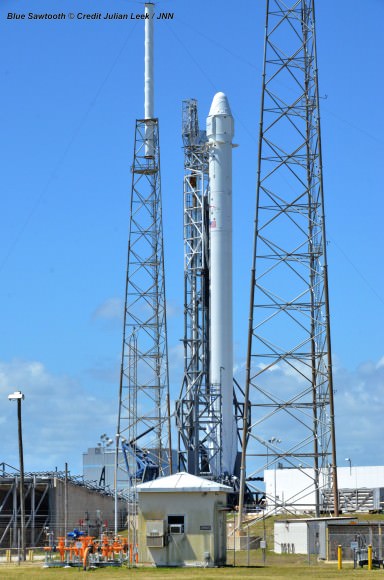
Monday’s launch was temporarily put in doubt by the unexpected loss on Friday (April 11) of a backup computer command relay box called a multiplexer/demultiplexer (MDM) that resides in the station’s S0 truss.
The primary MDM continued to function normally.
The MDM’s provide commanding to the station’s external cooling system, Solar Alpha Rotary joints, Mobile Transporter rail car and insight into other truss systems.
It must function in order for the astronauts to use the robotic arm to grapple and berth the Dragon at a station docking port when it arrives on Wednesday, April 16, at about 7 a.m. EDT.
NASA managers held an extensive series of review meetings since Friday with ISS program managers, station partners, and SpaceX to exhaustively consider all possibilities and insure it was safe to fly the Dragon mission.
NASA gave the final go ahead after a readiness review this Sunday morning of managers, engineers and flight controllers.
ISS crew members will conduct a spacewalk to replace the failed MDM unit after the Dragon arrives.
This unmanned SpaceX mission dubbed CRS-3 mission will deliver some 5000 pounds of science experiments, a pair of hi tech legs for Robonaut 2, a high definition imaging camera suite, an optical communications experiment (OPALS) and essential gear, the VEGGIE lettuce growing experiment, spare parts, crew provisions, food, clothing and supplies to the six person crews living and working aboard the ISS soaring in low Earth orbit under NASA’s Commercial Resupply Services (CRS) contract.
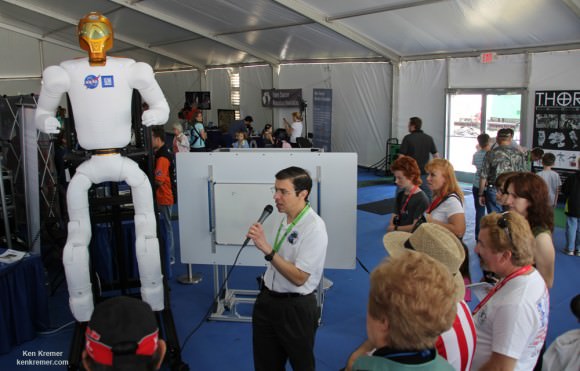
This launch has already been postponed twice since mid-March.
The original March 16 launch target was postponed 2 days before liftoff due to contamination issues with insulation blankets located inside the unpressurized trunk section of Dragon.
The second postponement from March 30 occurred when an electrical short knocked out the critical Air Force tracking required to insure a safe launch from the Eastern Range in case the rocket veers off course towards populated ares and has to be destroyed in a split second.
SpaceX is under contract to NASA to deliver 20,000 kg (44,000 pounds) of cargo to the ISS during a dozen Dragon cargo spacecraft flights over the next few years at a cost of about $1.6 Billion.
To date SpaceX has completed two operational cargo resupply missions and a test flight. The last flight dubbed CRS-2 blasted off a year ago on March 1, 2013 atop the initial version of the Falcon 9 rocket.
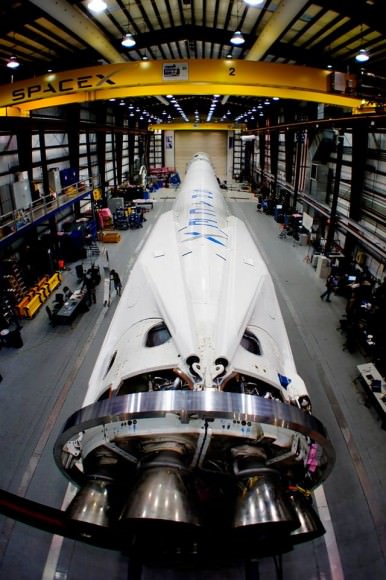
For this Falcon 9 flight, the rocket will sprout legs for a controlled soft landing in the Atlantic Ocean, guided by SpaceX engineers.
Eventually SpaceX will test land landings in a ramped up series of rocket tests
Stay tuned here for Ken’s continuing SpaceX, Orbital Sciences, commercial space, Orion, Chang’e-3, LADEE, Mars rover, MAVEN, MOM and more planetary and human spaceflight news.
A Salad Bar for the Space Station
Freeze-dried bags of dehydrated “astronaut food” may seem like a fun novelty for school kids on Earth, but despite all the hard work that goes into providing the residents of the Space Station with nutritious and varied meal options there’s one thing that remains a rare and elusive commodity on astronauts’ menus: fresh produce.
Although fruit and vegetables do occasionally find their way aboard the ISS via resupply missions (to the delight of the crew) researchers are moving one step closer to actually having a vegetable garden in orbit. On Monday, April 14 Friday, April 18, NASA’s Veg-01 experiment will launch to the ISS aboard a SpaceX Dragon capsule to test the in-flight viability of an expandable plant growth chamber named “Veggie.”
In development for several years, Veggie is now getting its chance to be space-tested with the launch of the SpaceX-3 resupply mission. Veggie uses clear collapsible bellows as miniature greenhouses, inside which plant “pillows” can be cultivated with the aid of root-mats and a bank of LED lights.

Astronauts will see how well “Outredgeous” romaine lettuce fares in microgravity inside the Veg-01 experiment, and can also use the LED bank as a light source for other experiments.
“Veggie will provide a new resource for U.S. astronauts and researchers as we begin to develop the capabilities of growing fresh produce and other large plants on the space station,” said Gioia Massa, the NASA payload scientist for Veggie. “Determining food safety is one of our primary goals for this validation test.”
While other plant-growth experiments are currently aboard ISS, Veggie boasts the simplest design and largest growing area of any of them to date.
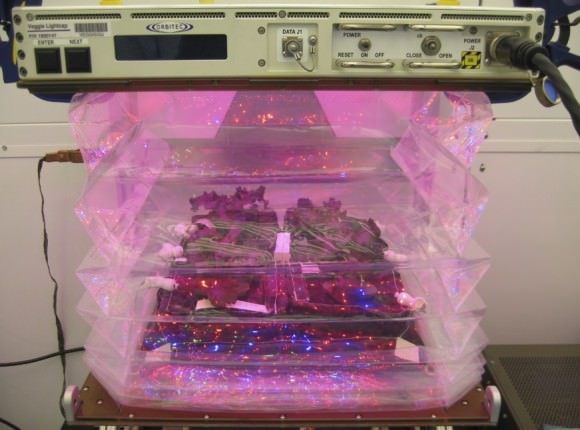
“Our hope is that even though VEGGIE is not a highly complex plant growth apparatus, it will allow the crew to rapidly grow vegetables using a fairly simple nutrient and water delivery approach.”
– Howard Levine, Ph.D. and chief scientist at Kennedy Space Center (2012)
In addition to providing fresh food, maintaining a miniature garden in orbit would be therapeutic for astronauts on long-duration missions.
“Based upon anecdotal evidence, crews report that having plants around was very comforting and helped them feel less out of touch with Earth,” Massa said. “You could also think of plants as pets. The crew just likes to nurture them.”
The Veggie system was developed for NASA by Orbital Technologies Corporation (ORBITEC) in Madison, Wisconsin, via a Small Business Innovative Research Program. Its innovations may eventually lead to better food production not only in space but also in limited-resource regions on Earth.
With the ultimate success of Veggie, ISS astronauts may soon find themselves floating in line at the in-house salad bar. (Watch out for those rogue croutons!)
Read more in the NASA news article by Linda Herridge here, and learn more about the Veggie project here.

